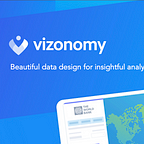Building Powerful tools for Infrastructure Forecasting
Leveraging powerful open source libraries for analyzing and forecasting infrastructure growth.
The infra-disaggregation tool, built on open source python-based libraries, deploys a hybrid approach to model the distribution of non-building infrastructure values on a 30 arc-second grid. Using World Bank transportation experts, a top-down approach is used to estimate the total asset value and allocation across infrastructure sectors: from roadways and energy utilities to telecommunication antennas and sanitation facilities. For total asset values, the model considers the public portion of gross capital stock (GCS), assuming most non-building infrastructure is government-owned. The underlying spatial disaggregation model constitutes a variety of global spatial infrastructure datasets as well as population, nighttime lights, and other global/economic indicators defined by the World Development Indicators. The result of this tool is an extrapolation of infrastructure growth used by the Bank to determine where to best allocate capital investments.
Open source geospatial libraries — such as Shapely, Fiona, and GDAL — are used for raster/image processing. It is currently available on Windows computers only.
Tools for Big Data Analysis and Image Processing
01 Using Python for Deep Data Analysis
Python has quickly become the go-to programming language for automating processes and analyzing big data. From scraping datasets — such as timestamps, tables, and other values — online to automating GIS analytical processes, one can save many hours avoiding repetitive tasks. For this project, Vizonomy used open-source Python libraries to import various spatial data layers representing infrastructure and later applied growth forecasts based on user-defined parameters. Then, with the Geospatial Data Abstraction Library (GDAL) these extrapolations are converted into usable, raster-based layers that can imported into any GIS software
Introducing The Geospatial DataAbstraction Library (GDAL)
Often used for remote sensing and to develop vegetation-based indices from satellite imagery and drones, GDAL became critical for our team when determining whether a given pixel (or location) would be subject to infrastructure growth and, if so, by how much. This is just one example of how GDAL can be used in a GIS project. It is most commonly used to merge aerial imagery or to manipulate images to highlight certain features such as water features, forest fires, urban areas, and varying types of vegetation. Visit GDAL’s open source foundation, or learn more on how we use satellite imagery across Vizonomy’s projects.
